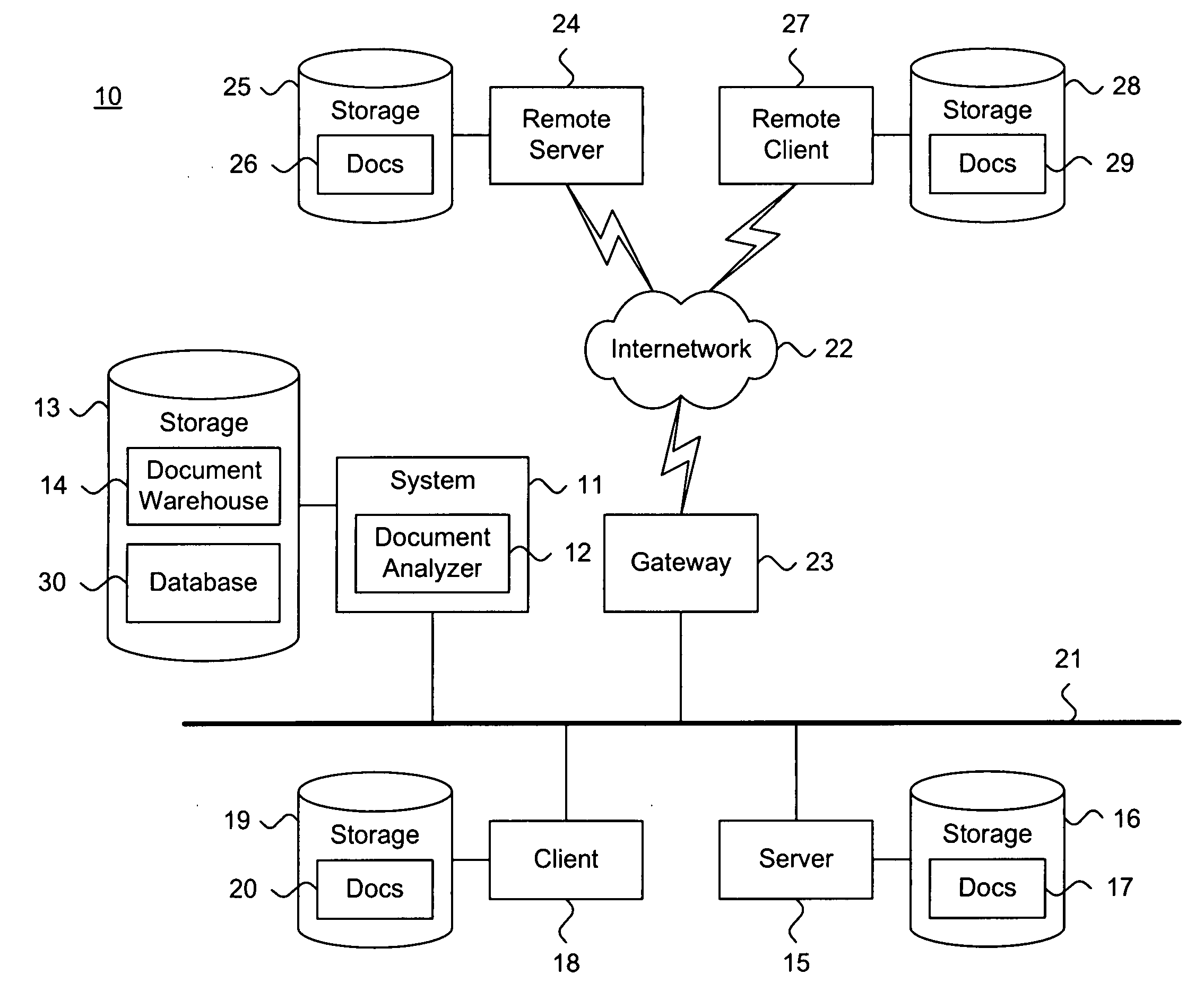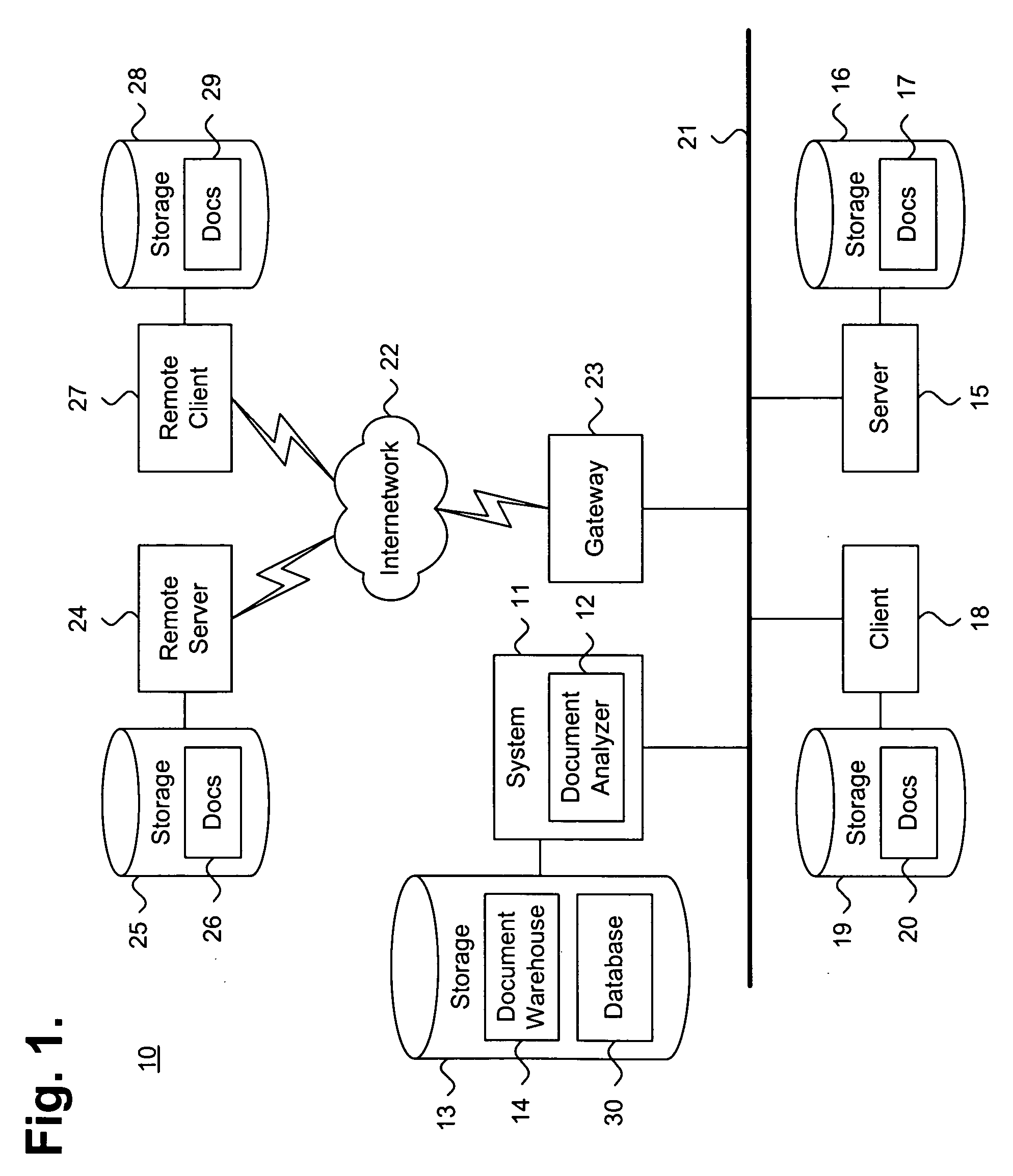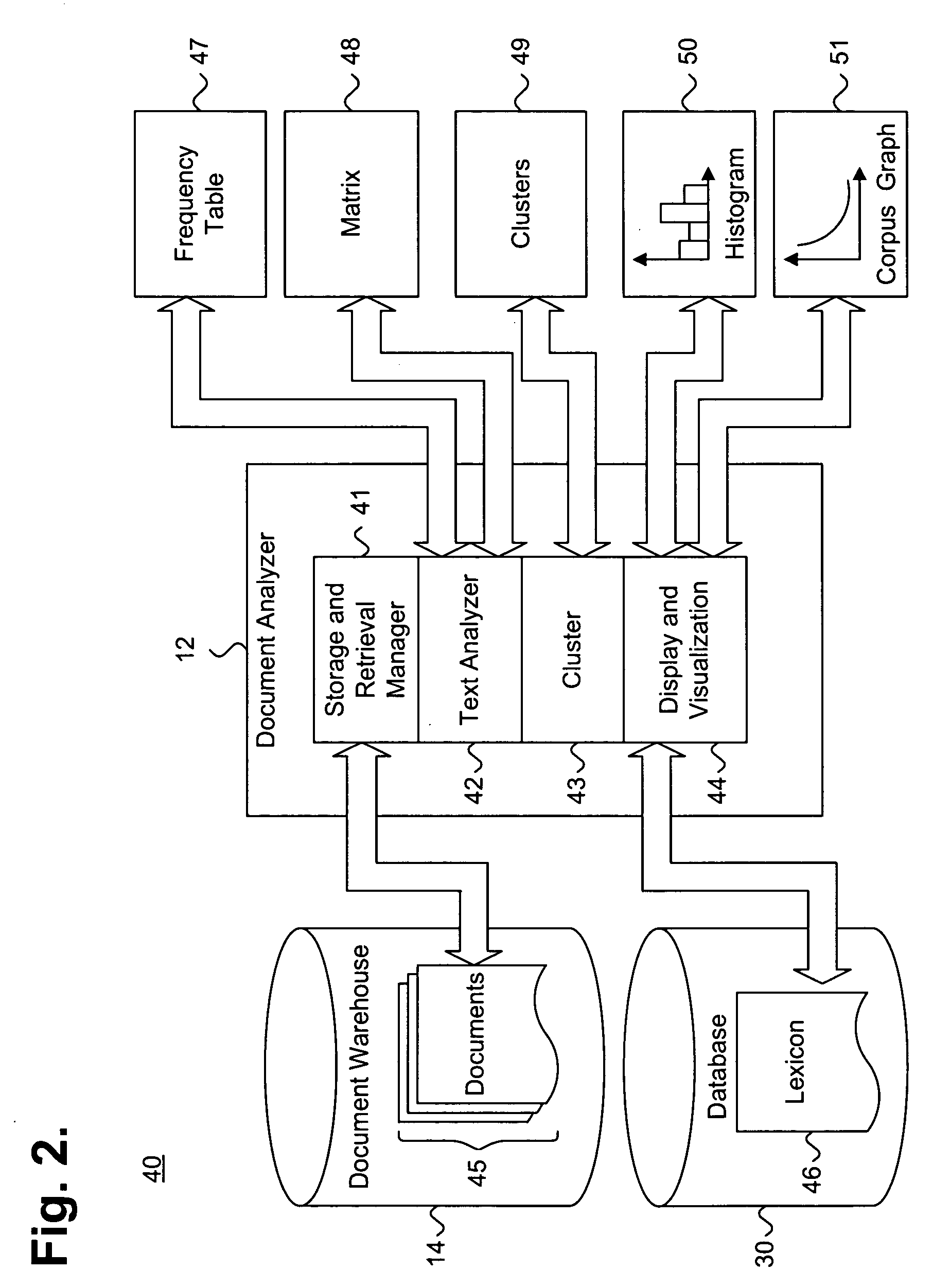System and method for efficiently generating cluster groupings in a multi-dimensional concept space
a multi-dimensional concept space and clustering technology, applied in multi-dimensional databases, web data retrieval, instruments, etc., can solve the problems of a high degree of precision and recall, a difficult identification of relevant content, and a lack of common structure or shared type of documents, so as to achieve efficient generation of clusterings.
- Summary
- Abstract
- Description
- Claims
- Application Information
AI Technical Summary
Benefits of technology
Problems solved by technology
Method used
Image
Examples
Embodiment Construction
Glossary
[0030] Keyword: A literal search term which is either present or absent from a document. Keywords are not used in the evaluation of documents as described herein.
[0031] Term: A root stem of a single word appearing in the body of at least one document.
[0032] Phrase: Two or more words co-occurring in the body of a document.
[0033] A phrase can include stop words.
[0034] Concept: A collection of terms or phrases with common semantic meanings.
[0035] Theme: Two or more concepts with a common semantic meaning.
[0036] Cluster: All documents for a given concept or theme.
[0037] The foregoing terms are used throughout this document and, unless indicated otherwise, are assigned the meanings presented above.
[0038]FIG. 1 is a block diagram showing a system 11 for efficiently generating cluster groupings in a multi-dimensional concept space, in accordance with the present invention. By way of illustration, the system 11 operates in a distributed computing environment 10, which inclu...
PUM
 Login to View More
Login to View More Abstract
Description
Claims
Application Information
 Login to View More
Login to View More - R&D
- Intellectual Property
- Life Sciences
- Materials
- Tech Scout
- Unparalleled Data Quality
- Higher Quality Content
- 60% Fewer Hallucinations
Browse by: Latest US Patents, China's latest patents, Technical Efficacy Thesaurus, Application Domain, Technology Topic, Popular Technical Reports.
© 2025 PatSnap. All rights reserved.Legal|Privacy policy|Modern Slavery Act Transparency Statement|Sitemap|About US| Contact US: help@patsnap.com



